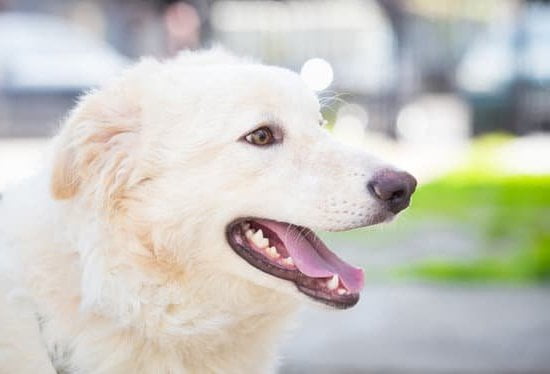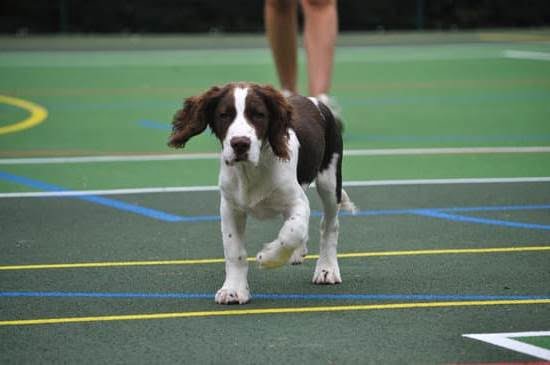Drug sniffing dogs play a crucial role in law enforcement, utilizing their remarkable olfactory abilities to detect illicit substances. These highly trained canines are an invaluable asset in identifying drugs and aiding in criminal investigations. In this article, we will delve into the world of drug sniffing dogs, focusing specifically on their ability to detect marijuana or THC.
Firstly, it is important to grasp the purpose and significance of drug sniffing dogs. These specially trained animals assist law enforcement agencies in detecting drugs, uncovering hidden stashes, and apprehending individuals involved in drug-related activities. Their acute sense of smell allows them to distinguish between various substances with remarkable accuracy, making them an integral part of police operations.
To understand how drug detection works for canines, it is necessary to explore the science behind their olfactory systems. Dogs possess specialized receptors in their noses that enable them to detect specific odors associated with drugs. These receptors are incredibly sensitive, allowing them to pick up even the faintest scent of narcotics. This innate capability is further developed through training methods that enhance their olfactory acuity.
One substance that drug sniffing dogs are often trained to detect is marijuana or THC. The training protocols for these dogs involve exposing them to different illicit substances, including marijuana and its derivatives.
This equips them with the ability to accurately identify the scent of marijuana during searches or investigations. In recent years, with changing laws surrounding marijuana legalization, questions have arisen about the impact on dog training and usage if dogs continue to be trained to detect this specific substance.
In this article, we will delve deeper into these topics and explore the legalities, controversies, as well as challenges surrounding drug detection by these remarkable animals. Additionally, we will also discuss future developments and potential adaptations in ensuring efficient and accurate drug detection by drug sniffing dogs. With a comprehensive understanding of their role and capabilities, we can better appreciate how these four-legged allies contribute significantly to the fight against drug-related crimes.
The Science Behind Drug Detection
Olfactory System in Dogs
Drug detection in dogs is primarily based on their highly developed olfactory system. Dogs have an incredibly acute sense of smell that allows them to detect and distinguish various scents, including drugs like marijuana and THC. In fact, dogs possess up to 300 million olfactory receptors, compared to only six million in humans. These receptors are specialized sensory cells located in their noses that capture odors.
Specialized Receptors for Drug Detection
Within the olfactory system, dogs have specific receptors that enable them to detect different substances, including drugs. This ability is due to volatile organic compounds (VOCs) emitted by these substances, which are released into the air and can be detected by the dog’s receptors.
When a drug-sniffing dog detects a particular odor associated with drugs like marijuana or THC, it will typically exhibit a specific trained behavior, such as sitting or barking, to indicate the presence of those substances.
Training Drug Sniffing Dogs
Drug sniffing dogs undergo extensive training to enhance their detection abilities. During training, dogs are exposed to various scents associated with drugs through controlled and repetitive exercises. By pairing the desired scent with positive reinforcement techniques such as play or treats, dogs learn to associate the odor with a reward system.
Additionally, trainers use progressive detection training methods known as “imprinting” and “proofing.” Imprinting involves introducing one specific scent at a time until the dog can quickly identify it consistently. Proofing then challenges the dog’s ability to differentiate between different scents in more complex scenarios.
It is important to note that drug sniffing dogs are trained to recognize a variety of illicit substances, not just marijuana or THC. However, due to the prevalence of marijuana usage and its distinct odor profile, many drug sniffing dogs receive specialized training in detecting this particular substance. This training enables them to effectively locate and alert their handlers to the presence of marijuana, aiding in law enforcement efforts.
Are Drug Sniffing Dogs Trained to Detect Marijuana or THC?
Specific Training Protocols for Drug Sniffing Dogs
Drug sniffing dogs undergo extensive training to become proficient in detecting various substances, including marijuana and THC. The training protocols are designed to harness the natural olfactory capabilities of these canines and enhance their ability to detect specific drugs. Handlers utilize a reward-based system that reinforces positive associations between target odors, such as marijuana or THC, and rewards like treats or playtime.
During training, dogs are exposed to controlled samples of different drugs, including marijuana and THC. They are taught to identify and alert their handlers when they detect the target odor. This is typically done through passive indications, such as sitting or staring at the location where the odor is present. The dogs are trained to distinguish between different drugs and ignore distractions or unrelated scents.
The Ability of Drug Sniffing Dogs to Detect Marijuana and THC
Drug sniffing dogs have proven to be highly effective in detecting marijuana and THC. Their specialized olfactory receptors enable them to detect even trace amounts of these substances. Research has shown that dogs can identify the odor of marijuana even when it is concealed within other scents or materials.
The accuracy of drug detection by these canines is impressive. In many cases, they can detect drugs hidden inside vehicles, packages, or even on a person’s body. This makes them valuable assets in law enforcement efforts to combat drug trafficking and other related crimes.
Overall, drug sniffing dogs play a crucial role in identifying marijuana and THC during various law enforcement operations ranging from routine traffic stops to executing search warrants. Their ability to pinpoint specific odors helps officers locate illegal drugs swiftly and efficiently.
Considerations for Legalized Marijuana States
With the legalization of marijuana in some states for medical or recreational use, questions have arisen regarding how drug sniffing dogs will be affected by this change in legislation. While possessing small amounts of marijuana may no longer be illegal, it does not necessarily mean that drug sniffing dogs will become obsolete.
The training and usage of these canines may need to be adapted in states where marijuana is legalized. It is crucial for law enforcement agencies to establish clear guidelines on how drug detection should be approached in these circumstances. Additionally, reevaluating the legalities surrounding the use of evidence obtained solely through a dog’s alert on marijuana or THC may be necessary.
The Use of Drug Sniffing Dogs in Law Enforcement
Drug sniffing dogs are widely utilized by law enforcement agencies for their ability to detect illegal substances, including marijuana or THC. These highly trained canines play a crucial role in assisting officers in various scenarios, from routine traffic stops to executing search warrants. The use of drug sniffing dogs has become an integral part of law enforcement efforts to combat drug trafficking and possession.
One of the main advantages of using drug sniffing dogs is their heightened sense of smell. A dog’s olfactory system is far more powerful compared to humans, with estimates suggesting that they can detect scents at least 1,000 times better than us. This remarkable sense of smell enables them to detect even trace amounts of drugs, including marijuana and THC.
When it comes to training drug sniffing dogs, specialized protocols are followed to ensure their effectiveness. Dogs are initially trained on basic obedience and socialization skills before progressing to specialize in drug detection.
During this training process, canines are exposed to a variety of scents associated with different drugs, including marijuana and THC. By repeatedly exposing the dogs to the target odors and rewarding them for accurate detections, they learn to associate the scents with positive outcomes such as treats or playtime.
Dog handlers play a crucial role in maintaining the accuracy and reliability of drug sniffing dogs. They undergo extensive training themselves to understand canine behavior and effectively communicate with their four-legged partners. Handlers must also continuously reinforce a strong bond between themselves and the dog, as it enhances the overall performance during detection tasks.
| Benefits | Challenges |
|---|---|
| – Canines have a superior sense of smell compared to humans | – False positives can occur due to contamination or handler error |
| – Dogs can detect even trace amounts of drugs | – Environmental conditions can affect accuracy |
| – Rapid and efficient detection capabilities | – Concerns about potential racial biases in targeting individuals |
| – Dogs provide a non-invasive method of drug detection | – Legal implications in states with legalized marijuana |
Legalities and Challenges Surrounding Marijuana Detection by Dogs
In recent years, the legalization of marijuana in various states has raised questions about the role of drug sniffing dogs in detecting marijuana or THC. This section will examine the legal implications of using drug sniffing dogs for marijuana detection and discuss the potential challenges that arise due to differing state laws.
One of the primary concerns surrounding the use of drug sniffing dogs is whether their detection of marijuana or THC is still considered a lawful search. In states where marijuana has been legalized for recreational use, such as Colorado and California, courts have ruled that a positive alert from a drug dog does not provide probable cause for searching a vehicle or property without additional evidence.
However, in states where marijuana remains illegal, such as Texas and South Carolina, courts have generally upheld the legality of searches based on canine alerts for these substances.
To further complicate matters, some states have implemented variations known as “decriminalization” laws, which reduce possession offenses to civil infractions rather than criminal offenses. In these states, where possessing small amounts of marijuana results in minimal penalties, there is ongoing debate over whether a dog’s detection should be considered probative enough to justify further investigation.
The varying legal landscape across different states poses significant challenges for law enforcement agencies utilizing drug sniffing dogs. Police departments must navigate complex legal frameworks and adapt their training protocols accordingly. Additionally, ensuring consistency and accuracy among different canine teams becomes increasingly challenging when state laws differ.
Additionally, it is important to consider the impact that legalized marijuana may have on the training and usage of drug sniffing dogs. Some argue that since dogs cannot distinguish between illegal drugs and legal substances containing THC, their reliability may be called into question. To address this concern, some police departments are exploring options such as retraining their existing drug sniffing dogs to ignore marijuana or incorporating new breeds with specialized training techniques into their K9 units.
Overall, the legalities and challenges surrounding marijuana detection by drug sniffing dogs are complex and ever-evolving. As more states move towards legalization, the role of these canines in detecting marijuana and THC will likely continue to be a topic of debate and adaptation within law enforcement agencies.
| Legal Implications | Challenges |
|---|---|
| In states where marijuana is legalized, positive alerts from drug dogs may not provide probable cause for searches without additional evidence. | Varying state laws regarding marijuana legalization pose challenges for law enforcement agencies utilizing drug sniffing dogs. |
| In states where marijuana possession is decriminalized, debate ensues regarding whether a dog’s detection should justify further investigation. | Training consistency and accuracy become increasingly challenging when state laws differ. |
Accuracy and Reliability of Drug Sniffing Dogs
Drug sniffing dogs play a crucial role in law enforcement, particularly in detecting drugs like marijuana and THC. However, it is important to understand the accuracy and reliability of these dogs in drug detection.
1. Success Rates and Limitations:
When it comes to drug detection, the success rates of drug sniffing dogs can vary depending on several factors. The training and experience of the dog handler, as well as the environmental conditions during a search, can all influence the accuracy of the dog’s detection. For example, research has shown that drug detection dogs have a higher success rate in controlled settings such as airports compared to random traffic stops.
It is also important to recognize the limitations of drug sniffing dogs. Dogs may give false positives or false negatives due to various reasons such as contamination or distractions in the surrounding environment. False positives can occur when a dog signals that drugs are present even when none are actually there. On the other hand, false negatives can occur when drugs are present but the dog fails to detect them.
2. Factors Influencing Accuracy:
Various factors can impact the accuracy of drug sniffing dogs in detecting marijuana or THC. Dogs rely on their olfactory system, which is highly sensitive and capable of detecting even trace amounts of odor molecules. However, environmental conditions such as extreme temperatures or strong contaminants can affect their ability to accurately detect drugs.
Additionally, handler training is crucial for ensuring the reliability of drug detection by dogs. Handlers must know how to interpret the dog’s behavior correctly and provide clear commands during searches. Regular training sessions and evaluations help maintain high accuracy levels.
3. Continuing Research and Development:
Efforts are underway to improve the reliability of drug sniffing dogs through ongoing research and development. Scientists and trainers are exploring new techniques such as utilizing synthetic odors for training purposes or developing electronic devices that mimic canine olfactory capabilities.
Moreover, advancements in technology may also play a role in enhancing accuracy and reliability. For instance, emerging technologies like electronic noses and portable mass spectrometry devices could supplement or complement the work of drug sniffing dogs in the future.
Controversies and Criticisms Surrounding Drug Sniffing Dogs
Drug sniffing dogs have long been a valuable asset to law enforcement agencies in detecting illegal drugs. However, their use has not been without controversy and criticism. This section will address some of the concerns raised by critics regarding potential false positives or racial biases, as well as explore potential alternatives to drug sniffing dogs in law enforcement.
One major concern surrounding drug sniffing dogs is the possibility of false positives. These occur when a dog alerts to the presence of drugs, but no drugs are actually present. Factors such as residual odors on money or belongings can lead to false positive indications.
In addition, human error from handlers misinterpreting a dog’s alert or using suggestive cues can also contribute to false positives. Critics argue that these false positive alerts can result in unwarranted searches and infringements upon individuals’ rights.
Another issue raised by critics is the potential for racial biases in drug dog detection. A study conducted by the American Civil Liberties Union (ACLU) found that drug dogs were more likely to alert to African American and Hispanic individuals compared to white individuals during traffic stops in Illinois. This raises concerns about the objectivity and reliability of these animals’ detections, leading some critics to question whether there may be unconscious bias influencing their behavior.
Alternatives to drug sniffing dogs have been suggested by those who believe that there are more accurate and less biased methods of detecting drugs. One proposed alternative is the use of technology such as chemical sensing devices or devices that analyze air samples for specific drug molecules. These technologies can provide more precise and objective results without the potential for human error or unconscious bias.
While controversies and criticisms persist, it is important to note that many law enforcement agencies still rely on drug sniffing dogs due to their decades-long track record of success in locating illicit substances. Additionally, advancements in training methods and ongoing efforts to address concerns raised by critics represent an opportunity for improvement in this field.
Future Developments and Adaptations in Drug Detection
As technology continues to advance, there are potential future developments and adaptations that may impact the role of drug sniffing dogs in detecting marijuana and THC. One area of development is the use of electronic scent detection devices, which could potentially supplement or replace the need for drug sniffing dogs in certain situations.
These devices utilize sensors to detect volatile organic compounds associated with drugs, including marijuana and THC. While these devices are not currently as accurate or reliable as trained canines, ongoing research aims to improve their capabilities.
Another potential adaptation in drug detection is the use of training innovations and advancements. Canine training methods have already evolved over time, utilizing positive reinforcement techniques to enhance detection abilities. However, there is ongoing research investigating whether specific molecular markers or genetic traits can be used to select and breed dogs with an even stronger affinity for detecting drugs like marijuana or THC. This could lead to even more precise and efficient drug detection capabilities in the future.
In addition, there is increasing interest in the development of alternative methods for drug detection, such as biosensors or lab-based tests. These methods could provide a more objective and standardized approach compared to relying solely on drug sniffing dogs.
Biosensors, for example, use biologically derived recognition elements that can detect specific substances like marijuana or THC with high sensitivity and accuracy. Such technologies may offer valuable alternatives to complement or enhance the work of drug sniffing dogs in law enforcement.
Overall, while drug sniffing dogs play a crucial role in detecting drugs like marijuana and THC currently, future developments and adaptations may shape how we approach drug detection in the years to come. Advances in technology, training methods, and alternative detection methods hold promise for enhancing accuracy and efficiency in identifying illegal substances. Balancing traditional canine expertise with these innovative approaches could lead to more effective strategies and better outcomes in combating illicit drug activity.
Conclusion
In conclusion, drug sniffing dogs play a crucial role in law enforcement by detecting the presence of illegal substances such as marijuana and THC. Their unique olfactory systems and specialized training allow them to accurately detect these substances, making them invaluable assets to police departments across the country. Although there are some legal and ethical challenges surrounding their use, the accuracy and reliability of drug sniffing dogs continue to make them an effective tool in combating drug offenses.
As states continue to legalize marijuana for medicinal or recreational use, the training protocols for drug sniffing dogs may need to be adapted. It is important for handlers and trainers to stay updated on changes in laws and regulations regarding marijuana in order to ensure seamless integration of drug detection dogs into law enforcement practices.
Additionally, advancements in technology may also influence the future role of drug sniffing dogs. New methods of detection that utilize scientific instruments or chemical analysis may offer alternative options for law enforcement agencies.
Despite controversies and criticisms surrounding drug sniffing dogs, they remain essential assets in detecting drugs like marijuana and THC. Their ability to quickly identify hidden substances can help prevent the distribution and use of illegal drugs, contributing to safer communities.
Moving forward, it is crucial for law enforcement agencies to continually evaluate and improve their training methods, taking into account evolving drug detection needs and potential advancements in technology. The role of drug sniffing dogs will undoubtedly continue to evolve as society’s relationship with drugs changes, but their importance as reliable detectors cannot be overstated.
Frequently Asked Questions
Do drug dogs detect THC?
Drug dogs are trained to detect a wide variety of drugs, including THC. THC is the main psychoactive compound found in marijuana or cannabis, and drug dogs have the ability to detect its odor.
These specially trained dogs have an incredible sense of smell and can pick up even trace amounts of drugs, such as THC, which makes them valuable assets in law enforcement efforts to detect illicit substances.
Can TSA dogs smell gummy edibles?
TSA (Transportation Security Administration) dogs are primarily trained to sniff out explosives rather than drugs. While they might be able to sniff out some types of illegal substances, they are not specifically trained to detect drugs like gummy edibles containing THC or other narcotics.
However, it is important to note that traveling with any form of marijuana or cannabis product is generally prohibited by federal law in the United States, regardless of whether it is in the form of gummies or other edibles.
What drugs can dogs not smell?
Dogs have an exceptional olfactory system and can often detect various types of illegal drugs due to their strong odor profiles. However, there are certain substances that may be challenging for dogs to detect solely based on their scent properties. For instance, synthetic cannabinoids or “spice” may pose difficulties for drug-sniffing dogs because they contain man-made chemicals that might not produce distinctive odors easily detected by canine noses.
Moreover, highly pure fentanyl analogs or other new synthetic opioids may also present challenges due to their chemical composition and low odor detection thresholds for dogs. Despite these limitations, dogs remain highly effective in detecting a wide range of drugs when properly trained and deployed by law enforcement agencies.

Welcome to the blog! I am a professional dog trainer and have been working with dogs for many years. In this blog, I will be discussing various topics related to dog training, including tips, tricks, and advice. I hope you find this information helpful and informative. Thanks for reading!





